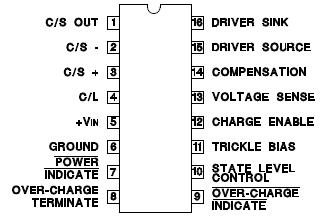UC2906: Features: · Optimum Control for Maximum Battery Capacity and Life· Internal State Logic Provides Three Charge States· Precision Reference Tracks Battery Requirements Over Temperature· Controls Both ...
floor Price/Ceiling Price
- Part Number:
- UC2906
- Supply Ability:
- 5000
Price Break
- Qty
- 1~5000
- Unit Price
- Negotiable
- Processing time
- 15 Days
SeekIC Buyer Protection PLUS - newly updated for 2013!
- Escrow Protection.
- Guaranteed refunds.
- Secure payments.
- Learn more >>
Month Sales
268 Transactions
Payment Methods
All payment methods are secure and covered by SeekIC Buyer Protection PLUS.

 UC2906 Data Sheet
UC2906 Data Sheet







